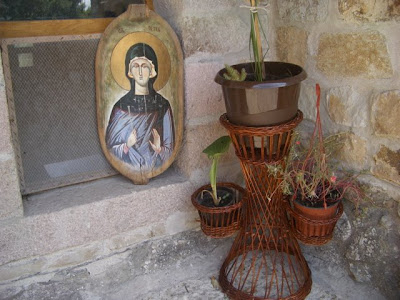 I found incredible nice pictures of this church by jaime.silva
I found incredible nice pictures of this church by jaime.silva
The Ascension church (Crkva-Svetog-Vaznesenja) in Belgrade is not very well known, but because of a personal reason, I have a connection to that church and so I wanted to write about its simple architecture and its beautiful interiors.
I found myself praying in front of this wonderful iconostatic, with a strong winter midday sun shining through the windows. The church lays in the middle of Belgrade's trafficked roads, but inside this little church it's completely peaceful. An unforgetable moment!
The church was built in 1863 following a project of Pavle Stanišić and Jovan Ristić, while the construction works were performed by Josip Štok and Fernand Stevanov, and the contractor was Koča Z. Popović. The order for its construction was issued by Knez Mihailo Obrenović , and the works were financed through donations of many Belgrade citizens.
The church was shaped in accordance with then prevailing romantism, following examples of the old Serbian monasteries, first of all the Ravanica monastery.
The first icons were painted by Nikola Marković in 1864, but later, this task was assigned to the most famous painter of that time, Steva Todorović, who completed this enterprise in 1881. Also, the original wall paintings made by Nikola Marković have been replaced with new compositions made by Andrey Bitsenko in 1937.
The church is rich in collections of icons, old books, articles of gold and other things from the XIX century.
 Last summer i made a little tour with my family through the Raska (Sandzak) region. Not far away from Novi Pazar lie some of the most interesting sacral buildings of Serbia.
Last summer i made a little tour with my family through the Raska (Sandzak) region. Not far away from Novi Pazar lie some of the most interesting sacral buildings of Serbia.
The monastery of St. George in Ras belongs to the most important sacred places in the history of Serbian people. As early as the Middle Ages it became known as "Djurdjevi Stupovi", named after its pillars towers which adorned the monastery church. The monastery was founded by the founder of the Nemanjic dynasty, Stefan Nemanja, in the second half of the 12th century.
 According to the narrative of his biographer and son, later Serbian king Stefan Prvovencani (First Crowned), Nemanja vowed to build a temple and consecrate it to St. George, to whom he had devoutly cried for help in his prayers many times in his life. After he had assumed supreme power over Serbian lands (1166), Nemanja began to build the monastery.
According to the narrative of his biographer and son, later Serbian king Stefan Prvovencani (First Crowned), Nemanja vowed to build a temple and consecrate it to St. George, to whom he had devoutly cried for help in his prayers many times in his life. After he had assumed supreme power over Serbian lands (1166), Nemanja began to build the monastery.
Around 1175, the church was painted, and the monastery instantly gained high reputation as the first endowment of the Nemanjic dynasty.
Although Stefan Nemanja had built churches and monasteries before, as a territorial sovereign (St. Nicholas, the church of the Holy Virgin in Toplica), the monastery of St. George in Ras represented a turning-point in the ideology of Nemanjic rulers.With its exceptional position in the vicinity of the cathedral temple of the episcopacy of Ras, and based on the ancient spiritual foundations, the monastery of St. George established the Christian thought of the Serbian state. The world in which Djurdjevi Stupovi played an important role was profoundly altered by the Turkish conquest. War and poverty, emigration and violence, turned the life of the monastery into mere survival, and even that was endangered at the end of the 17th century. For some time, the monastery was deserted (1688), then fire and tyrant hand caused serious damage to the church and the monastery complex, and many ancient Serbian manuscripts suffered considerable damage.
At the beginning of the 19th century the monastery of St. George was a ruin even more devastated by wars. The stones of the glorious foundation were built into the nearby conquerors` fortifications. Аfter the partial reconstruction that was conducted in the 1980’s, the monastery revived its liturgical activities in 2002. By great efforts from the Serbian Orthodox Church, behalf of state institutions, firms and individuals, as well as of Serbian people, the dormitory was renovated and young monastic fraternity moved in.
Djurdjevi Stupovi in Ras (together with Sopocani and Peter’s Church) has been included into the UNESCO list in 1979, as a monument of outstanding importance.

The church lie on top of a hill and the panoramic view overlooking Novi Pazar is fantastic. The external appearance of this single-nave temple with a tripartite sanctuary, a nave with lateral vestibules and a narthex (entry hall), flanked by two towers, emanates a spirit of western Romanesque building (the so called Raska School).
 With the addition of the apse on the eastern side in 1282/83, the entry tower was transformed into a chapel and the tomb of King Dragutin. Here the official Website with very beautiful pictures and here some more information with plans and videos.
With the addition of the apse on the eastern side in 1282/83, the entry tower was transformed into a chapel and the tomb of King Dragutin. Here the official Website with very beautiful pictures and here some more information with plans and videos.





















